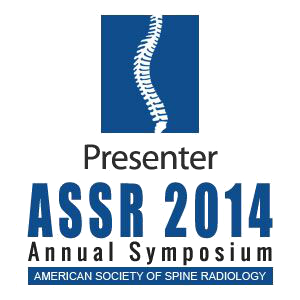An abrupt, shocking movement, like a car crash, sports injury, or slip and fall, can leave you with more than temporary shock. This sudden force may cause whiplash, a common but often misunderstood injury. The condition occurs when the head is suddenly forced back and forth, overstretching the neck's soft tissues. The result can be a cluster of symptoms ranging from persistent discomfort to debilitating pain that disrupts daily life and overall health. The first step toward effective management and recovery is understanding the signs of whiplash and what causes it.
Understanding Whiplash
Whiplash is a type of neck injury that occurs due to a sudden, violent, and speedy back-and-forth head movement. Although widely discussed in relation to car crashes, this violent motion may happen due to sports injuries, falls, or other physical trauma. The injury involves soft tissue damage, particularly to the muscles, ligaments, and tendons that support the cervical spine, rather than bone fractures.
Understanding the biomechanics of whiplash is key to learning about the injury. The trauma takes place in two stages:
-
There is hyperextension of the neck, in which the head is abruptly and forcibly thrown backward — This overstretches the muscles and ligaments found in the front of the neck more than they were meant to stretch.
-
A snap forward of the head follows this into hyperflexion, stretching the loose tissue behind the neck — This rapid sequence of hyperextension and hyperflexion produces microscopic tears in soft tissues, leading to inflammation and pain.
Although it is more commonly referred to as whiplash, medical professionals tend to use a broader term for the disorder, Whiplash-Associated Disorder (WAD). The term refers to the initial injury and the broad scope of the symptoms that may accompany it, including neck pain, stiffness, headaches, dizziness, and cognitive problems. WAD is classified from Grade 0 (no complaints) to Grade 4 (severe injury with neurological symptoms or fractures).
It is necessary to differentiate a neck sprain (damage to the ligaments) from a neck strain (damage to the muscles) to improve the diagnosis. In whiplash, both may be identified, complicating the clinical picture.
The Primary Causes of Whiplash
Whiplash is a common injury type, and even though it is most often related to a particular type of accident, it can be provoked by various traumas involving force. These reasons are important to both prevent and identify the injury:
-
Auto accidents — The most common cause of whiplash, especially rear-end collisions. Even at low speeds, the sudden impact can jerk the head forward and backward, creating the typical hyperextension–hyperflexion motion. The impact of the collision, together with the body's inertia, results in a violent S-shaped deformation of the cervical spine that causes the typical soft tissue disorders. The danger still exists even in the minor fender benders because the significant injury can be aggravated by the inability to anticipate.
-
Sports injuries — Whiplash risk is high in many contact or high-impact sports. Football, boxing, wrestling, or martial arts sportspeople are especially susceptible. Violent head movement similar to that in car accidents can be caused by a violent tackle, falling, or direct blow to the head or body that overstrains the ligaments and the muscles of the neck.
-
Falls — A simple slip or fall can also cause whiplash. When an individual collapses and their head is violently shocked forward or backward as it hits the ground or an object, the trauma they have can be grave. This occurs particularly when falling down the stairs or through ice.
-
Physical abuse or assault — The violent shaking of an individual is a type of whiplash that is referred to as shaken baby syndrome in infants. In adults, the injury may happen during a physical assault of the head, in which it is violently shaken or struck.
-
Other traumas — Not as common, yet still a possible cause, other violent incidents, like abrupt halts on amusement park rides, and in particular roller coasters, can also cause whiplash. This injury can be caused by any situation that results in an extreme and abrupt neck movement.
Common Symptoms of Whiplash
Whiplash symptoms may set in right after an injury or a day later or even later, and it is important to keep an eye on yourself even after a minor accident. Whiplash manifestations vary in severity and combinations, but the following are common symptoms:
-
Neck pain and stiffness — This is the most symptomatic one. The cervical spine soft tissue damage results in inflammation and muscle spasms, which cause a constant ache or burning pain. This pain is often localized in the back of the neck and may extend to the shoulders and the upper back.
-
Pain that worsens with movement — Due to the injury, turning or moving your head over your shoulder to look or nodding becomes painful and hard to do. This restricted scope of movement is a primary diagnostic symptom. Movement of the head stretches the torn ligaments and muscles, increasing pain.
-
Headaches — Headaches, which tend to start in the back of the head and are noted to be traveling to the forehead or temples, are a common symptom of whiplash. These headaches are usually caused by muscle strain and nerve irritation in the neck.
Other symptoms and feelings can come with whiplash besides the abovementioned main symptoms. These include:
-
Tenderness — The neck, shoulders, upper back muscles, and ligaments become tender to touch. This discomfort may spread into the arms.
-
Tingling or numbness — The cervical spine nerves may be compressed or irritated by the extreme hyperextension or hyperflexion of the neck. Tingling or numbness may radiate from the neck down the arms to the hands and fingers. This requires immediate medical care, as it may indicate nerve involvement.
-
Fatigue and dizziness — The body's energy is diverted to recovering from the injury, resulting in fatigue. The injury may also affect the vestibular system, which coordinates the sense of balance, causing dizziness or lightheadedness.
-
Blurred vision — In some people, there is a temporary blurred vision, which is thought to be a result of the effect of the injury on the nerve or muscles that facilitate eye movement.
Identifying these symptoms early is essential to pursuing a timely diagnosis and initiating a successful treatment plan. Although in most instances, the symptoms of whiplash may disappear, disregard of these manifestations may result in chronic pain and persistent complications.
The Risk of Delayed Symptoms
Another common and often dangerous misconception is to assume that because you feel okay right after an accident, you are not hurt. As a matter of fact, the symptoms of whiplash are typically delayed, even up to one whole day or even more. This lag is a critical factor in the injury and must be considered in your interest and survival.
Why Symptoms Are Delayed
This delayed onset is mainly attributed to your body's natural fight-or-flight reaction. When you undergo a traumatic experience like a car crash or fall, the adrenal glands release the stress hormones adrenaline and cortisol into your system. It happens because hormones are a survival mechanism. They sharpen your senses, shift blood flow, and are a powerful natural painkiller. This adrenaline rush may give you a false impression that you are not harmed, even though there is injury to the soft tissue. The underlying injury can show pain after the first shock passes and the adrenaline level returns to normal.
Furthermore, the complete extent of the physical damage requires some time to show. The microscopic rupture of the muscles, tendons, and ligaments characterizes whiplash. The body's inflammatory response may need 24 to 72 hours to become fully active. They cause accumulating inflammation and swelling, which places pressure on the nearby nerves and tissues, causing you to experience the pain and stiffness you might not have felt right after the injury.
Delayed Symptoms Checklist
If you have experienced any traumatic incident, even a minor one, watch for the following delayed symptoms:
-
Increased or spreading neck pain — What began as a mild pain can end up as a sharp and constant pain. Your pain can also extend to your neck, shoulders, upper back, or arms.
-
Increment of headaches — New or progressive headache, especially on the back of your head, that begins at the base of your skull, is a typical symptom of whiplash.
-
Ringing in the ears (tinnitus) — It may be a symptom of nerve irritation or a more severe neurological concern associated with the injury.
-
Blurred vision — Visual injuries may be signs of involvement of nerves or a concussion.
-
Sleep disorders — Pain and discomfort may cause discomfort in finding a comfortable position to sleep, resulting in insomnia or restless nights.
-
Irritability or difficulty concentrating — Cognitive and emotional symptoms associated with this can usually be linked to the stress and pain of the injury, and in certain instances, can be indicative of a concussion.
Due to this possibility of delayed onset, a medical assessment is always advisable following any event that may trigger a whiplash, even though it may not pose any problem. A medical worker could conduct a comprehensive examination and recommend the most appropriate action to avoid a potentially chronic disease.
Emergent and Uncharacteristic Symptoms that Require Medical Emergency Services
Most incidences of whiplash are treated through conservative management, but some symptoms may serve as red flags indicating that the injury is more severe and thus needs urgent medical care. It is crucial to recognize these warning signs and not hesitate to seek emergency care.
An injury can lead to any of the following symptoms, which is why you should go to an emergency room or seek immediate medical assessment:
-
Severe, unrelenting pain — The pain that is excruciating and does not respond to over-the-counter pain relievers or becomes more severe with time might indicate an underlying, although serious, concern, like a fracture or severe soft tissue damage.
-
Pain, weakness, or numbness in the neck, arms, or legs — A sharp, electric pain, tingling, or numbness extending down your neck into your arms or legs indicates that you could have nerve damage or compression. This may be a symptom of a herniated disc or injury to the nerve roots that requires immediate attention to avoid chronic problems.
-
Balance or walking problems — Clumsiness, dizziness, or difficulty walking may signal central nervous system involvement. This is a very dangerous symptom that must not be overlooked.
-
Loss of bladder or bowel control — It is a highly severe neurological symptom that might signify the destruction of the spinal cord. It demands emergency medical attention.
Another aspect to be considered is that there is a high level of overlap between a concussion, or mild traumatic brain injury (TBI), and whiplash. Whiplash-causing forces may also cause the brain to strike the inside of the skull. Thus, an individual can be injured in two places simultaneously. The acute symptoms of a concussion, which should be treated, include:
-
Memory problems or amnesia regarding the event
-
Confusion or feeling “foggy”
-
Egregious irritability or mood swings
-
Light and sound sensitivity
It is important to identify these severe and atypical symptoms to be safe. When in doubt, it is always best to err on the side of caution and consult a healthcare professional. Prior diagnosis and treatment play a significant role in averting chronic pain and other adverse conditions in the long term.
How Doctors Diagnose Whiplash
Whiplash diagnosis is primarily a clinical procedure involving a detailed medical history and a physical examination, and not only imaging tests. Many patients may be confused about this. However, it is a significant distinction worth knowing.
History and Physical Examination of the Patient
When you see a doctor for suspected whiplash, the first step is to take a detailed accident history. The physician will ask you questions regarding:
-
The type of accident
-
The direction of the impact
-
Time interval between the accident and the occurrence of symptoms
This information helps the doctor understand the force and mechanism of your injury.
Thereafter, a detailed physical examination will be conducted. The physician will gently palpate your neck, upper back, and shoulders to detect pain, tenderness, or muscle spasms. A vital element of the test is measuring your range of neck movement. The physician will request you to move your head in various positions, up, down, sideways, and turning motions, to identify what positions are limited and what causes pain. They will also examine your reflexes, strength, and sensation in your arms and hands to see whether nerves are involved.
Imaging Tests
A common question is whether imaging tests like X-rays, CT scans, or MRIs can diagnose whiplash. These cannot directly diagnose whiplash. Whiplash is a soft tissue trauma, and these examinations are mainly used to visualize bones and, in MRI, more detailed soft tissues.
However, these tests are necessary for the diagnostic procedure since they help rule out the more serious diagnoses. A bone fracture, displacement of vertebrae, or other bony irregularities can be immediately determined with the help of an X-ray. In case of any suspected nerve injury or herniated disc, an MRI can be ordered to better view the soft tissues like the spinal cord, discs, and ligaments.
While an imaging test will not confirm whiplash, a clear scan that shows no fractures or other severe damage, combined with a positive physical exam for symptoms, helps the doctor confirm the diagnosis and rule out more dangerous injuries.
The Most Common Whiplash Treatments
Your doctor will likely start with a conservative approach to treat your whiplash, but more advanced medical procedures are available for persistent or severe symptoms. The goal is always to reduce pain, restore your neck's function, and prevent long-term complications.
Some common treatments and medications include:
-
Medications — You will likely be advised to start with over-the-counter NSAIDs like ibuprofen or naproxen to reduce pain and inflammation. If your pain is more severe or you are experiencing muscle spasms, your doctor may prescribe stronger painkillers or muscle relaxants.
-
Physical therapy — This is a crucial part of your recovery. A physical therapist will guide you through gentle exercises to stretch and strengthen your neck muscles, improve your flexibility, and increase your neck's range of motion. Early, gentle movement is key to preventing long-term stiffness.
-
Heat and cold therapy — Applying ice packs immediately after the injury can help reduce initial swelling. In contrast, heat can be used later to relax your tight muscles and increase blood flow to the area.
-
Massage therapy and chiropractic care — These can help alleviate your muscle tension and restore proper spinal alignment.
Some advanced therapeutic interventions include:
-
Transcutaneous Electrical Nerve Stimulation (TENS) therapy — TENS therapy uses a small, battery-powered device with electrodes placed on your skin. It delivers low-voltage electrical currents to the affected area to relieve your pain. The electrical impulses are thought to block or alter your perception of pain signals and may also stimulate your body's production of natural painkillers called endorphins. While research on its long-term effectiveness for whiplash is mixed, it can provide short-term relief and is a non-invasive, non-pharmacological option.
-
Radiofrequency (RF) Nerve Ablation — A radiofrequency neurotomy is a minimally invasive procedure used for chronic whiplash pain that has not responded to other treatments. A doctor uses radio waves to generate heat, which is then used to target and destroy or “ablate,” specific nerve fibers in your neck that are transmitting pain signals. This procedure can relieve long-lasting pain, sometimes for six months to a year or more.
-
Spine surgery — Surgery is a rare and last-resort option for whiplash. It is only considered in severe and specific cases where your injury has caused permanent structural damage to your spine, such as a herniated disc, a vertebral fracture, or significant nerve compression that has not improved with other treatments. Surgical procedures, like a discectomy (to remove a damaged disc) or spinal fusion (to stabilize the vertebrae), are performed to decompress your nerves and restore your spinal stability.
Find a Neurointerventional Surgeon Near Me
Whiplash is a common but complex injury that stems from the rapid acceleration-deceleration forces that strain the neck's soft tissues. The symptoms, which include neck ache and stiffness up to headaches and dizziness, may be crippling and may affect everyday life. Understanding these signs and the mechanism of injury is the first step to successful management.
If you are experiencing persistent whiplash symptoms, do not wait for the pain to subside on its own. Contact LAMIS today to schedule a consultation and take control of your recovery. Contact our Los Angeles team at 310-734-6088.






